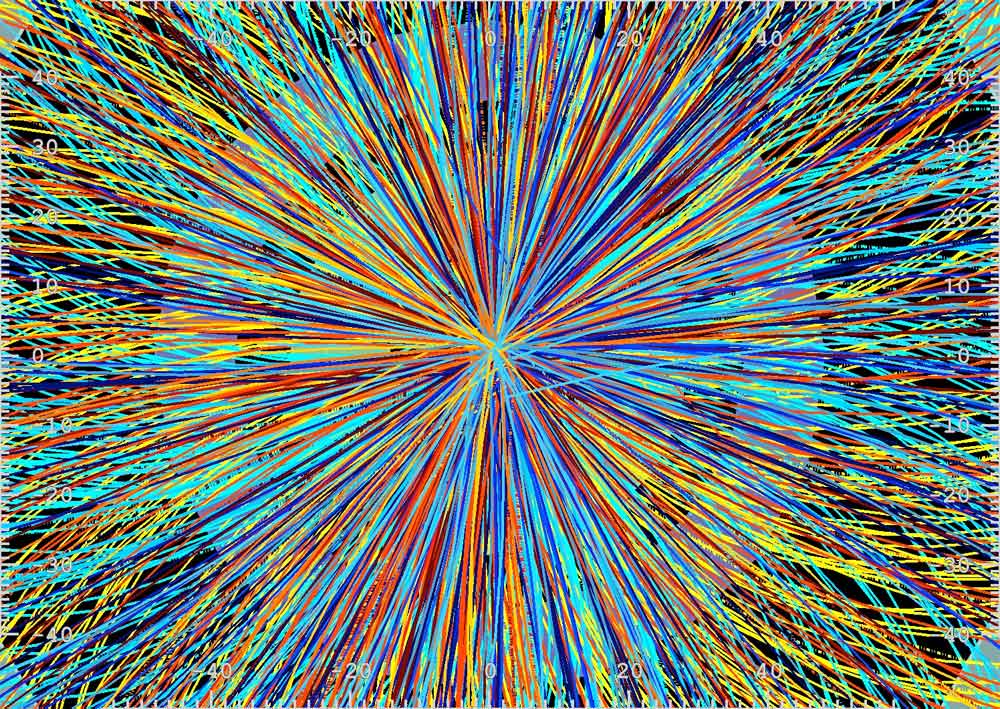Einstein's Theory Predicts a Weird State of Matter. Could It Be Lurking in the World's Largest Atom Smasher?
What happens when particles don't collide, but miss, in the world's largest particle accelerator? New physics!

The search narrows for a mysterious form of matter predicted from Einstein's theory of special relativity. After more than a decade of looking, scientists at the world's largest particle collider believe that they are on the verge of finding it.
But the researchers are not searching in the exploded guts of particles smashed together at nearly light speed.
Instead, physicists at the Large Hadron Collider (LHC), a 17-mile (27 kilometers) ring buried underground near the border between France and Switzerland, are looking for the missing matter, called a color glass condensate, by studying what happens when particles don't collide, but instead zoom past each other in near misses.
Related: Strange Quarks and Muons, Oh My! Nature’s Tiniest Particles Dissected
In the Standard Model of physics, the theory which describes the zoo of subatomic particles, 98% of the visible matter in the universe is held together by fundamental particles called gluons. These aptly named particles are responsible for the force that glues together quarks to form protons and neutrons. When protons are accelerated to near the speed of light, a strange phenomenon occurs: The concentration of gluons inside them skyrockets.
"In these cases, gluons split into pairs of gluons with lower energies, and such gluons split themselves subsequently, and so forth," Daniel Tapia Takaki, an associate professor of physics and astronomy at the University of Kansas, said in a statement. "At some point, the splitting of gluons inside the proton reaches a limit at which the multiplication of gluons ceases to increase. Such a state is known as the color glass condensate, a hypothesized phase of matter that is thought to exist in very high-energy protons and as well as in heavy nuclei."
According to Brookhaven National Laboratory, the condensate could explain many unsolved mysteries of physics, such as how particles are formed in high-energy collisions, or how matter is distributed within particles. However, confirming its existence has eluded scientists for decades. But in 2000, physicists at Brookhaven's Relativistic Heavy Ion Collider found the first signs that the color glass condensate could exist.
Sign up for the Live Science daily newsletter now
Get the world’s most fascinating discoveries delivered straight to your inbox.
When the lab smashed together gold atoms stripped of their electrons, they found a strange signal in the particles streaming out of the collisions, hinting that the atoms' protons were jam-packed with gluons and beginning to form the color glass condensate. Further experiments with colliding heavy ions at the LHC have had similar results. However, colliding protons together at relativistic speeds can only give a fleeting glimpse of the protons' innards before the subatomic particles violently explode. Probing the insides of protons takes a more gentle approach.
When charged particles, such as protons, are accelerated to high speeds, they create strong electromagnetic fields and release energy in the form of photons, or particles of light. (Thanks to the dual nature of light, it is also a wave.) These energy leaks were once dismissed as an unwanted side-effect of particle accelerators, but physicists have learned novel ways to use these high-energy photons to their advantage.
If protons find themselves whizzing past each other in the accelerator, the storm of photons they release can cause proton-on-photon collisions. These so-called ultra-peripheral collisions are the key to understanding the inner workings of high-energy protons.
"When a high-energy light wave hits a proton, it produces particles — all kinds of particles — without breaking the proton," Tapia Takaki, said in a statement. "These particles are recorded by our detector and allow us to reconstruct an unprecedentedly high-quality picture of what's inside."
Tapia Takaki and an international collaboration of scientists are now using this method to track down the elusive color glass condensate. The researchers published early results of their study in the August issue of The European Physical Journal C. For the first time, the team was able to indirectly measure the density of gluons at four different energy levels. At the highest level, they found evidence that a color glass condensate was just beginning to form.
The experimental results "…are very exciting, giving new information about the gluon dynamics in the proton, [b]ut there are many theoretical questions that have not been answered," Victor Goncalves, a professor of physics at the Federal University of Pelotas in Brazil and a co-author of the study, said in the statement.
For now, the existence of color glass condensate remains an elusive mystery.










